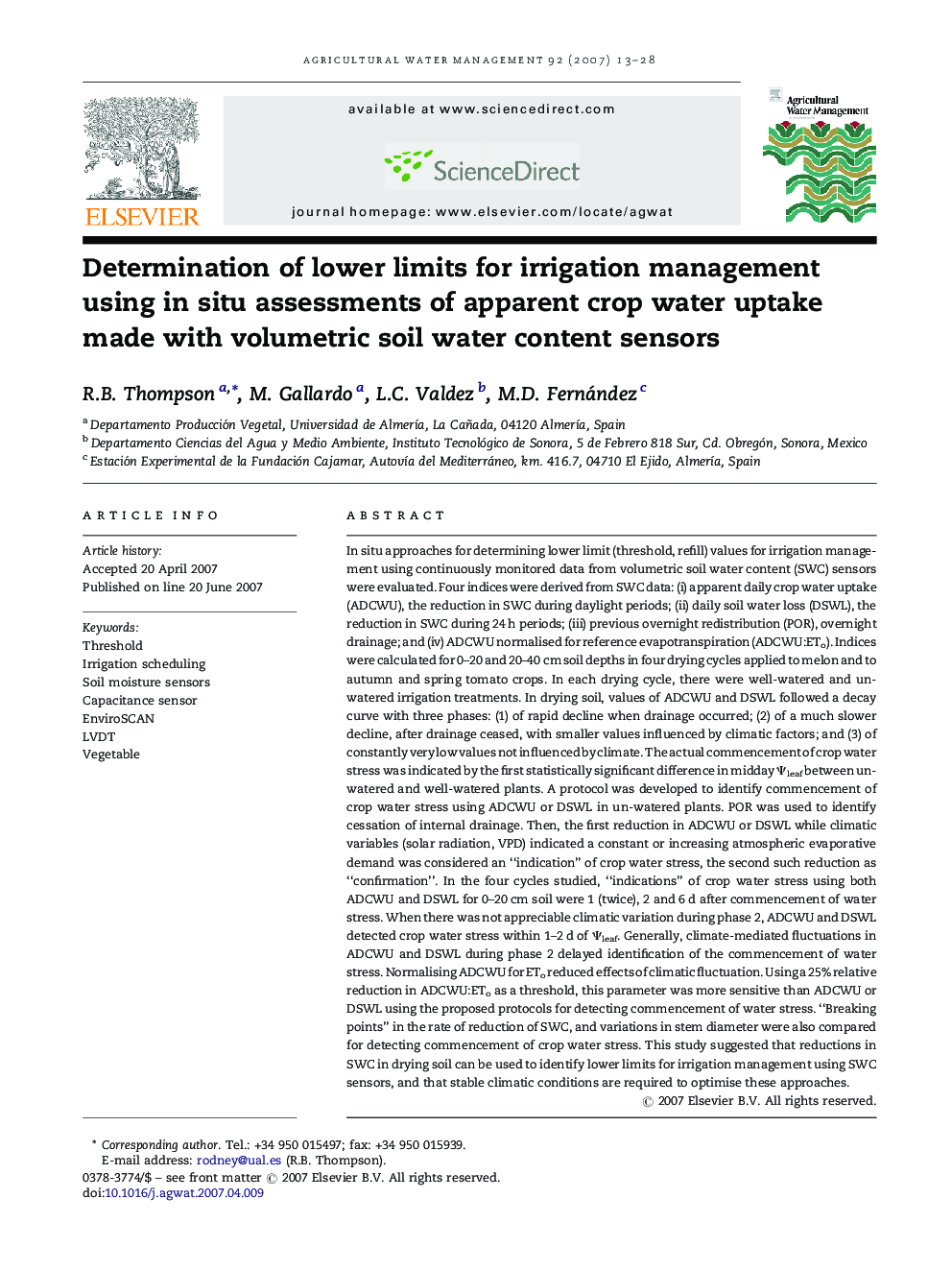| Article ID | Journal | Published Year | Pages | File Type |
|---|---|---|---|---|
| 4480357 | Agricultural Water Management | 2007 | 16 Pages |
In situ approaches for determining lower limit (threshold, refill) values for irrigation management using continuously monitored data from volumetric soil water content (SWC) sensors were evaluated. Four indices were derived from SWC data: (i) apparent daily crop water uptake (ADCWU), the reduction in SWC during daylight periods; (ii) daily soil water loss (DSWL), the reduction in SWC during 24 h periods; (iii) previous overnight redistribution (POR), overnight drainage; and (iv) ADCWU normalised for reference evapotranspiration (ADCWU:ETo). Indices were calculated for 0–20 and 20–40 cm soil depths in four drying cycles applied to melon and to autumn and spring tomato crops. In each drying cycle, there were well-watered and un-watered irrigation treatments. In drying soil, values of ADCWU and DSWL followed a decay curve with three phases: (1) of rapid decline when drainage occurred; (2) of a much slower decline, after drainage ceased, with smaller values influenced by climatic factors; and (3) of constantly very low values not influenced by climate. The actual commencement of crop water stress was indicated by the first statistically significant difference in midday Ψleaf between un-watered and well-watered plants. A protocol was developed to identify commencement of crop water stress using ADCWU or DSWL in un-watered plants. POR was used to identify cessation of internal drainage. Then, the first reduction in ADCWU or DSWL while climatic variables (solar radiation, VPD) indicated a constant or increasing atmospheric evaporative demand was considered an “indication” of crop water stress, the second such reduction as “confirmation”. In the four cycles studied, “indications” of crop water stress using both ADCWU and DSWL for 0–20 cm soil were 1 (twice), 2 and 6 d after commencement of water stress. When there was not appreciable climatic variation during phase 2, ADCWU and DSWL detected crop water stress within 1–2 d of Ψleaf. Generally, climate-mediated fluctuations in ADCWU and DSWL during phase 2 delayed identification of the commencement of water stress. Normalising ADCWU for ETo reduced effects of climatic fluctuation. Using a 25% relative reduction in ADCWU:ETo as a threshold, this parameter was more sensitive than ADCWU or DSWL using the proposed protocols for detecting commencement of water stress. “Breaking points” in the rate of reduction of SWC, and variations in stem diameter were also compared for detecting commencement of crop water stress. This study suggested that reductions in SWC in drying soil can be used to identify lower limits for irrigation management using SWC sensors, and that stable climatic conditions are required to optimise these approaches.
